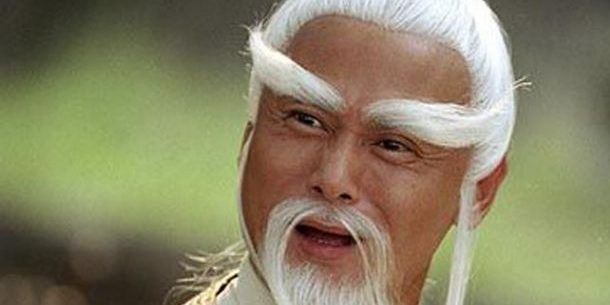With the rise of MMA and the UFC, people have begun to turn away from Kung Fu in the western world and Kung Fu Grandmasters are not happy about it. And like all ancient wizards, they are retiring to their caves and saving their lessons for those who can commit to a lifetime of studentry.
Kung Fu is decreasing in popularity, mainly because it is not the best self-defense martial art out there. In fact, unless you want to look awesome in a movie, there is really little Kung Fu can do for you in real life – or so say the new generation at least.

Ironically, most of the techniques in MMA and other martial arts the world over are all influenced by the ancient ways of Chinese martial arts – aka Kung Fu. Kung fu has a side kick, roundhouse, elbows, oblique kicks and more. Grandmasters teach how to keep the hands up while kicking the thighs, and the secret to all good strikes; footwork and strong hips.
So perhaps the question is not why is Kung Fu not interesting or not effective in a fight, but why is it not being marketed as such. And therein lies the problem, traditional masters are not willing to change their ways.
The training regimes of old Kung Fu grandmasters are notoriously strict, long and difficult.

Chinese masters teach their students to keep their hands up, how to knee someone, why kicking the meaty part of the thigh can really mess up your opponent’s day, and the secret to all strikes: footwork and strong hips.
So it’s really not a question of being effective in a fight, it’s more an issue of marketing and a few other issues. One of those issues being the training methods and regimens of traditional masters. An essay by Patrick Daly, writer behind the documentary “needle Through Brick”, explains that cultural heritage and tradition is holding Kung Fu masters back.
He explains that “ A real master can only teach real kung fu to his disciple who learns under him for at least 10 years in order to know his character well or he will create problems. We’ll not teach the practical use of Kung Fu to those who learn only 2 or 3 years. This is the traditional culture. That’s why a lot becomes extinct. Chinese traditional kung fu is like this.”
After asking the masters he interviews whether they are willing to modernise their training rituals and systems, they blankly refused. They claimed that “It has carried on from generations to generations in this way. From master to student through time. So we can’t do it freely as we wish. We must respect the way things were done. This is how we respect our masters.”

Although this is only the opinions of those who Daly interviewed, it is clear there is some discord between old Kung Fu grandmasters and the modern world we are living in. Looking around us, we can see a range of martial arts evolving and growing in popularity over the last few decades, much thanks to the grandmasters who are keen to be the ones behind this revival. They proactively promote new interpretations and evolutions and work to modernise their martial art every day.
While all this goes on around them, Chinese grandmasters stick to their traditions and disappear into their caves, waiting for that unlikely student who will dedicated 10 years to training. Sure, the odd lucky person exists out there who can do this, but the fast-paced and modern world we live in makes that reality increasingly difficult.
Traditional Kung Fu masters stick to traditional training methods, holding the belief that their system trains a morally sound, responsabile and mentally stable student – who one day may become a master themselves. When you look at BJJ or other martial arts that focus on mental stability as much as physical strength and power, there are similarities. That’s why there are very few black belts under the age of 18. It takes time to train and learn the intricate techniques, mentality and physicality of a martial arts, and for this we respect the old Kung Fu masters, but unless they modernise and adapt to the changing world, they’ll be left to die in their caves, alone, cold and mumbling about the demise of society.






